Are you looking for the 6 Best Zeiss Spotting Scopes For Hunting? you are at the right place. They are especially well-known for their superior lenses and imaging apparatus. Zeiss manufactures a variety of optical instruments, such as spotting scopes, which are well-liked by outdoor enthusiasts, hunters, and bird watchers. The 6 Best Zeiss Spotting Scopes For Hunting prioritize functionality and longevity in their design. They are frequently made with sturdy, weather-resistant materials, which makes them appropriate for a range of outdoor environments.
Immediately the 6 Best Zeiss Spotting Scopes For Hunting was their excellent rubber-armored finish. In addition to feeling good, the armor performs a fantastic job of shielding the glass. This is a major benefit when spending money on items like premium optics. The conventional push-on cup cover for the eyepiece is present on both Zeiss spotting scopes, along with a very useful end cap that clicks firmly.
6 Best Zeiss Spotting Scopes For Hunting
1. Zeiss Conquest Gavia 85
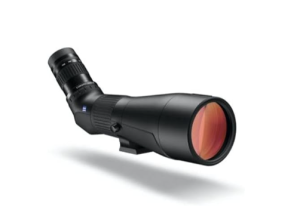
The ZEISS Conquest Gavia 85 30-60×85 Spotting Scope is made to observe the natural world without upsetting animals or causing any disturbances. It has a large objective to maintain bright, vibrant images even in low light and a powerful zoom to bring distant subjects closer. LotuTec hydrophobic exterior lens coatings and ZEISS’s renowned T* anti-reflection multi-coatings complement its magnification and objectives.
Known for its exceptional image quality and robust construction, this spotting scope is suitable for a variety of outdoor activities, including hunting. Designed for the less-traveled path, the small housing is composed of a robust yet lightweight magnesium alloy, which helps to cut weight without compromising strength.
Both the larger focus collar and the smaller zoom wheel on the eyepiece are simple to use, even when wearing gloves. O-rings seal the optical system, making it watertight against pressures of up to 400mbar, and the housing is nitrogen-filled for fog-proof performance a useful feature while traveling between extreme temperature variations.
Zeiss optics are frequently made to be robust and resistant to the elements. Given that it is probably both waterproof and fogproof, the Conquest Gavia 85 is appropriate for a variety of weather situations. Numerous spotting scopes, such as the Gavia 85, feature an angled body design that makes viewing more comfortable when the scope is positioned at various heights.
Features
- 85-mm Objective Lens
- Tiny Roof Prism Style
- Multiple Coatings in Optics
- Water and fogproof, with nitrogen-filled
- Strong and Lightweight Magnesium Structure
- Turning Tripod Collar
- Huge Focusing Collar with Texture
2. Zeiss Victory Harpia 95

The ZEISS Victory Harpia 95 Spotting Scope is built to deliver the exceptional performance that hunters, birdwatchers, and outdoor lovers have come to expect from the brand. It is designed to create crisp and clear wide-angle views that remain bright in difficult light or at high zoom. Extra-low dispersion fluoride glass is utilized at the outset of its performance, essentially eliminating color fringing and halos brought on by chromatic aberration and guaranteeing clear, sharp views with precise color fidelity.
This high-end spotting scope offers premium optics and a large objective lens for superior light transmission, making it an excellent choice for low-light hunting conditions. The large 95mm objective lens gathers a lot of light to keep views bright while seeing at high magnifications at extremely long distances. This helps to ensure that images stay sharp and clear even in low or difficult light conditions, such as at dawn and dusk. The spotting scope body alone is available for this Harpia 95 variant; an optional eyepiece is needed for optimal operation.
When utilizing the spotter in conjunction with other optics, such as a rangefinder or a pistol, the user can restrict head movement by precisely positioning the eyepiece using a rotating tripod collar. Tack-sharp photos are guaranteed by a dual-speed focusing mechanism, and front threads enable the use of filters to further improve and sharpen views, such as ND or polarizing. Even in the worst circumstances, the nitrogen-filled optical tube with an O-ring seal keeps it fog- and water-proof.
Features
- Eyepiece Needed for Appropriate Use
- Big 95mm Objective Lens
- Super-Low Fluoride Dispersion Glass
- LotuTec Coatings – Optical
- Water and fogproof, with nitrogen-filled
- Front Filter Thread M95x1.00
- Mechanism of Coarse- and Fine-Focusing
3. Zeiss Victory DiaScope 65 T FL/85 T FL
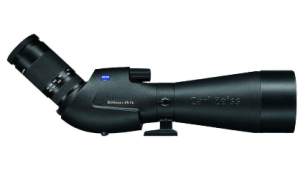
These models feature fluoride glass for superior image clarity and color fidelity. The 65mm and 85mm versions cater to different preferences in terms of size and weight. The product names “65” and “85” denote the objective lens’s diameter in millimeters. The objective lens of the Victory DiaScope 85 is 85 mm, whilst the 65 has a 65 mm objective lens. Generally speaking, brighter images are produced with a bigger objective lens since it lets in more light, especially in low light.
Fluoride glass, which is used to make the lenses, is represented by the letter “FL” in the product names. Fluoride glass improves color fidelity and image clarity while assisting in the reduction of chromatic aberrations.
A dual-speed focusing system that enables both coarse and fine adjustments is a common characteristic of these scopes. This helps focus on a target rapidly and get a crisp, detailed image afterward. Zeiss has a range of eyepieces that work with these scopes and give varying magnification choices to meet different observational requirements.
The scopes are made of premium materials for long-lasting construction, and they are frequently protected against moisture and dust to ensure outdoor use in a variety of weather conditions.
Zeiss ensures pleasant use for extended periods by paying attention to the design and ergonomics of their optics.
Features
- Possess a two-speed focusing mechanism
- Offers a range of suitable eyepieces
- 65’s objective lens is 65 mm.
- Its glass with fluoride content lessens chromatic distortions.
- T* multicoating that reduces reflection on the lenses
- The ergonomics and design of their lenses
4. Zeiss Victory DiaScope 85 T FL with Vario Eyepiece
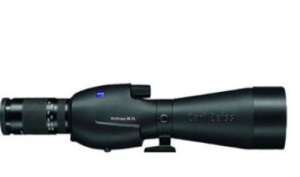
This spotting scope is known for its versatility, featuring an 85mm objective lens and a Vario eyepiece with a variable zoom range. Even in low light, the bright and clear image is produced by the strong light-gathering capabilities of the 85mm objective lens diameter. The term “FL” refers to fluoride glass, which is utilized in lens design to reduce chromatic aberrations and guarantee color accuracy and good resolution.
The weatherproof design of the spotting scope, along with its sealed housing that guards against water and fog, enables operation in a variety of environmental circumstances. An adjustable magnification within a certain range is possible with the Vario eyepiece, which is a zoom eyepiece. This makes it possible to view various subjects at various viewing distances with adaptability.
With its dual-speed focusing system, the scope probably allows for perfect focusing with coarse and fine adjustments. For a stable and comfortable grip, the spotting scope’s body may feature rubberized protection constructed of sturdy materials. Straight or Angled Design: Linear and angular designs are also offered for spotting scopes. For birdwatching and group photography, the angled design is frequently chosen.
Features
- Perpendicular Viewing
- 20–60x Magnification Eyepiece
- Two-Speed Focusing Mechanism
- FL Conceptual Glasses
- T* Multiple Coating
- LotuTec Coating for Protection
- Tripod Collar Rotating
- Water-resistant
5. Zeiss Victory Harpia 85
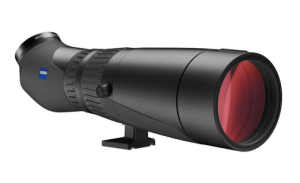
The ZEISS Victory Harpia 85 Spotting Scope is built to deliver the exceptional performance that hunters, birdwatchers, and outdoor lovers have come to expect from the brand. It is designed to produce crisp and clear wide-angle views. Using extra-low dispersion fluoride glass is the first step towards improving performance since it almost completely removes color fringing and halos brought on by chromatic aberration, guaranteeing clear, sharp views with true color fidelity.
Similar to the Harpia 95, this model features premium optics in a slightly more compact and lightweight design, making it suitable for hunters on the move. The front threads enable the employment of filters to further improve and sharpen vistas, while a dual-speed focusing system guarantees tack-sharp shots. With a standard 1/4″-20 thread that makes it simple to mount into the majority of photo, video, field, and other tripods as well as other support systems, the optical tube is nitrogen-filled and O-ring sealed to be water and fogproof in even the worst situations.
Features
- Eyepiece Needed for Appropriate Use
- Extra Large 85mm Objective Lens
- Super-Low Fluoride Dispersion Glass
- LotuTec and T* Optical Coatings
- Water and fogproof, with nitrogen-filled
- M86x1.00 Threaded Front Filter
- Mechanism of Coarse and Fine Focusing
6. Zeiss Victory Diascope 85 T FL with 20-75x Eyepiece
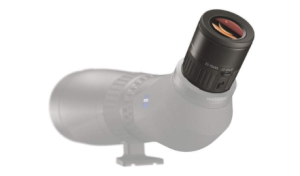
This spotting scope combines a large 85mm objective lens with a versatile zoom eyepiece, providing a wide field of view and the ability to zoom in on distant targets. To improve light transmission, lessen reflections, and provide a brilliant, clear image, the lenses are most likely coated with several layers of material.
The variable magnification range of the supplied eyepiece is 20–75x. This enables users to view items at different distances by zooming in and out. It’s a useful tool for seeing wildlife and birds. The area that can be seen using a spotting scope at a given distance is known as the field of vision. Depending on the degree of magnification, the field of view may change. Tracking moving subjects benefits from having a larger field of view.
To make the Victory Diascope waterproof and fogproof, it is probably sealed and filled with nitrogen gas. This guarantees dependable operation in all kinds of weather. There are high-end spotting scopes with dual-speed focusing systems, such as the Zeiss Victory Diascope. When focusing on a specific area, this permits both coarse and fine modifications.
Features
- Crafted with a robust and long-lasting
- Both fog- and water-proof
- Possesses a changeable 20–75x magnification range.
- 85mm diameter of the objective lens
- Fast and Slow Focusing
- Intended to be fixed on a tripod for steady
Read Also:
7 Best Bushnell Spotting Scopes For Wildlife
Factors to consider when choosing the 6 Best Zeiss Spotting Scopes For Hunting
Durability
Analyze the spotting scope’s build quality and material composition. It’s important to have a sturdy and weather-resistant construction when hunting because you may come across many types of weather. To guarantee dependable functioning in a variety of weather conditions, take into account elements like waterproofing and fogproofing.
Field of View
Tracking moving targets and swiftly scanning extensive regions are made easier with a larger field of view. But bear in mind that a smaller field of view is frequently the consequence of increased magnification. It is beneficial to have a larger field of view when tracking moving targets and scanning big areas. To make sure the field of view satisfies your hunting needs, take into account its magnification levels.
Eye Relief
The spotting scope’s eye relief should be taken into consideration if you use glasses. When wearing eyeglasses, adequate eye relief guarantees that you can see the complete field of vision without vignetting. Having enough eye relief is essential, particularly if you wear glasses. Make sure the eye relief on the spotting scope is sufficient to allow for comfortable and unhindered viewing.
Magnification
Think about the range of magnification you require for your hunting endeavors. For long-range observation, higher magnification is advantageous, but it may also narrow the field of view. Additionally, consider the objective lens’s size. A larger lens will let more light into the scope and improve image brightness, particularly in low light.
Cost
Determine your spending limit depending on your needs and preferences. Even though Zeiss lenses are usually high-end, there could be several variants with varying characteristics available at different price points. Although top-tier models could offer remarkable functionality, there are frequently great choices accessible at various price points.
6 Best Zeiss Spotting Scopes For Hunting FAQs
- Do Zeiss spotting scopes have fog and waterproof capabilities?
Zeiss offers a variety of waterproof and fogproof spotting scopes. This feature ensures that the scope stays clear and usable in rainy, snowy, or humid environments a crucial feature for hunters who may experience a variety of weather situations.
- Are the eyepieces on Zeiss spotting scopes straight or angled?
Zeiss provides spotting scopes with eyepiece options that are both straight and angled. The decision between the two is based on the particular needs of the hunting environment as well as personal taste. Straight scopes could be more practical for rapidly acquiring targets, while angled scopes are typically chosen for birdwatching and group views.
- What Zeiss spotting scope accessories are available?
Tripod adapters, travel cases, eyepieces with different magnifications, protective coverings, and other accessories are commonly offered by Zeiss for their spotting scopes.
Conclusion
To be successful at hunting, you must do your research and choose wisely among the 6 Best Zeiss Spotting Scopes For Hunting. Your unique hunting needs will determine the magnification and size of the objective lens that you should use. Strike a balance between using a larger objective lens for improved light gathering in low light and high magnification for in-depth observation.

